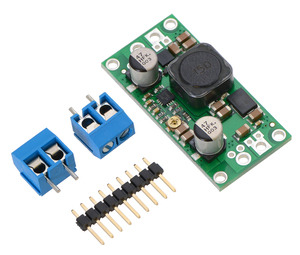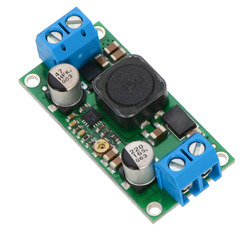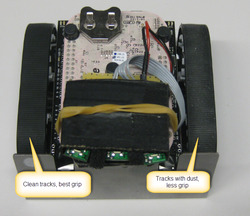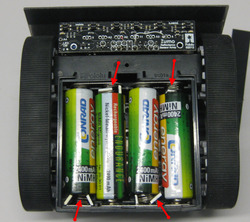Pololu Blog »
Pololu Blog (Page 66)
Welcome to the Pololu Blog, where we provide updates about what we and our customers are doing and thinking about. This blog used to be Pololu president Jan Malášek’s Engage Your Brain blog; you can view just those posts here.
Popular tags: community projects new products raspberry pi arduino more…
New short-range analog Sharp distance sensor
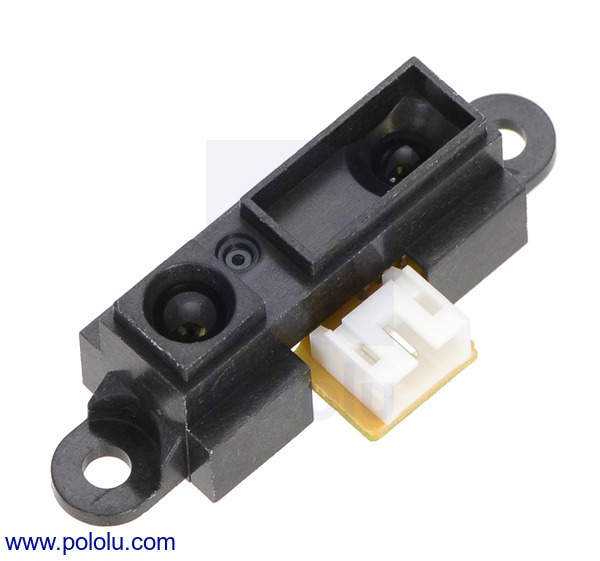 |
After having been out of the short-range Sharp GP2D120XJ00F analog distance sensor for a while, we are happy to have a higher-performance replacement: the Sharp GP2Y0A41SK0F analog distance sensor. The newer GP2Y0A41SK0F has the same physical dimensions, pinout, and 4 cm to 30 cm operating range as the original GP2D120XJ00F, but it offers a much higher update rate and lower average current draw. This sensor is an inexpensive and easy way to add close-proximity rangefinding or obstacle detection to your electronics or robotics project.
For longer-range analog rangefinders and shorter-range digital distance sensors, check out our full selection of optical rangefinders.
Powerful new S18v20x step-up/step-down regulators
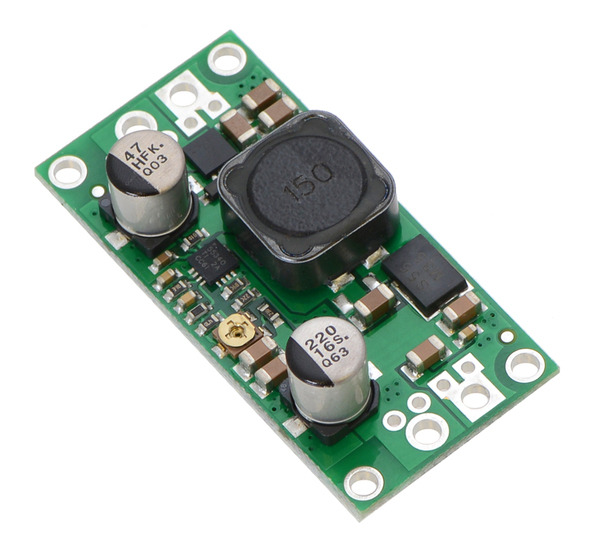 |
Earlier this month we introduced our new line of powerful U3V50x boost regulators; now we have a similarly powerful family of S18V20x step-up/step-down voltage regulators to go along with them! We are especially excited about these regulators, which have a wide 3 V to 30 V input voltage range, typical efficiency of 80% to 90%, and maximum output current of approximately 2 A when the input voltage is near the output voltage.
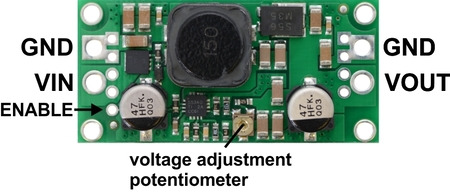 |
Step-up/step-down regulators like the S18V20x work with input voltages that are less than, equal to, or greater than the output voltage. This makes them especially well suited for battery-powered applications where the nominal battery voltage is close to the desired output voltage, and the actual battery voltage transitions from above the output to below as the battery discharges. For example, these regulators make it possible to get a steady 12V from a 12V battery or a steady 6V from five NiMH cells, which can be over 7 V when fully charged and below 5 V when drained. These regulators are also great for applications where having a very wide operating voltage range is desirable, such as projects where you want a lot of flexibility in power supply choice or in systems powered by alternative energy sources like solar or wind, where the output voltage can vary greatly.
The S18V20x family includes versions with fixed 5 V, 6 V, 9 V, or 12 V outputs and versions with adjustable 4 V to 12 V or 9 V to 30 V outputs. All of them feature built-in reverse-voltage protection, over-current protection, thermal shutdown, and an under-voltage lockout that keeps the modules from behaving erratically when the input voltage gets too low.
|
|
The compact boards (0.825″ × 1.7″) have four mounting holes for #2 or M2 screws and can be assembled with the included 5mm-pitch terminal blocks or 0.1″ header pins.
For other regulator options, you can take a look at our full selection of step-up/step-down regulators, step-up voltage regulators, and step-down voltage regulators.
New products: Vishay 38 kHz IR detector modules
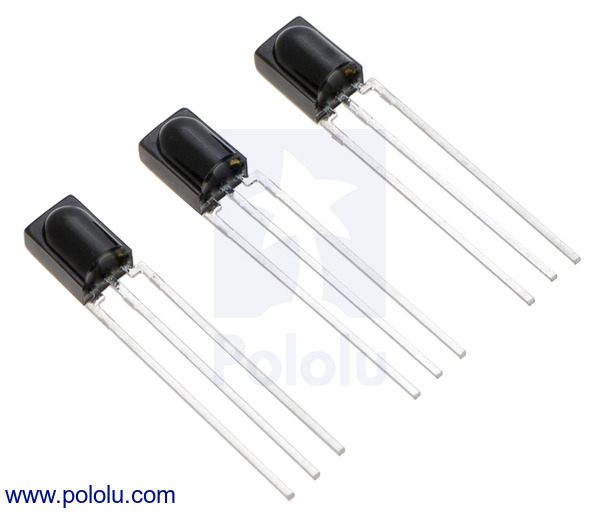 |
Modulated IR detectors typically used for remote control of household electronics have long been used in robot sensors because they are small, cheap, and very sensitive while still blocking out unwanted interference. However, part of what makes the modules so good for remote control is their complex automatic gain control (AGC) circuitry that adjusts the sensors’ sensitivity to ambient lighting conditions to give clean, digital outputs in a variety of environments. Unfortunately for those using the modules for other purposes, all of that magic is internal to the modules and leads to two shortcomings: we cannot know how strong the optical signal is because we do not know the gain value, and we cannot have consistent behavior because we cannot control how the AGC behaves.
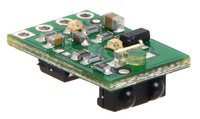 |
Pololu 38 kHz IR proximity sensor (original irs05a version). |
|---|
So, you can imagine how excited I was to find out about Vishay’s new IR modules designed specifically for sensor applications. They have two basic versions: one with a fixed gain that is constantly super-sensitive, and another one with a predictably-varying AGC that lets you know how bright the incident IR is. We used the fixed-gain units on the IR proximity sensors we released earlier this year, and we plan to make more products that use these unique sensors. In the meantime, we are happy to offer the through-hole versions of these sensors so you can start playing around with them to make your own sensor systems. Here are the two parts:
- The Vishay TSSP58038 has a fixed high gain setting, so it responds predictably and can detect a continuous modulated signal.
- The Vishay TSSP58P38 includes automatic gain control – but it is tuned to provide a usable measurement of the strength of the detected signal. When configured as a reflective proximity sensor, its output is a pulse with a width that depends almost linearly on the distance to the target.
Those IR proximity sensors I mentioned earlier work nicely with these new sensors since our boards include a high-brightness LED with a 38 kHz modulation circuit, so you can use several of those with these new IR detectors to make sophisticated sensing solutions in which you enable one emitter at a time and monitor the reflections with all the other sensors.
LED strip code used in Pololu Christmas video
We added the code we used for the LEDs in our Christmas video last week to our GitHub page. Ben cleaned it up a bit and added lots of comments, so we hope it’s helpful if you want to use it as a base to write some awesome sequences for your own LED strips.
In case you missed the video, here it is again:
New product: I²C Long Distance Differential Extender
 |
We’re now selling an I²C long distance differential extender from SJTbits. When you connect one of these boards to each I²C device in your system, they transparently convert all I²C communications to differential signaling and back, allowing the range of your I²C bus to be significantly increased (they have been tested at ranges of over a hundred feet).
For more information, see the I²C Long Distance Differential Extender product page.
Mini Sumo Tournament (with Zumos!)
 |
Erich, a professor at the Lucerne University of Applied Sciences and Arts in Switzerland, posted to our forum about their first Mini Sumo tournament, which took place this past weekend. The tournament was a part of Erich’s embedded systems programming class, for which he created a custom Mini Sumo robot platform for his students to modify. His robots use a custom PCB that mounts to the Zumo chassis kit and connects to the reflectance sensor array. Instead of an Arduino, his PCB uses a Freescale FRDM-KL25Z as the microcontroller board. Students customized the modified Zumos with their own sensors (we saw at least a few of them using our IR proximity sensors). 21 robots were entered into the competition, and a winner was determined over 5 rounds. Links to a competitor showcase video, several battle videos, and more information about the competition can be found in his forum post.
We are also excited to see a list of performance tweaks that Erich created for Zumo robots to be more competitive in Mini Sumo. We have made this available as a resource on the Zumo product pages.
|
|
While he was experimenting with our Zumo chassis, Erich posted to our forums a few times updating us on the progress of his modifications. You can follow his robot’s progression by visiting these forum posts:
March 2013: Zumo Robot with FRDM-KL25Z Board
September 2013: Zumo Robot with Pololu Plug-in Modules
October 2013: Zumo Robot with Pololu Plug-in Modules, assembled
Ping-pong ball collecting robot makes appearance at RubyConf
We saw this robotic ping-pong ball collector by Will Jessop on the Raspberry Pi blog a few days ago. The robot uses the Pololu 30T Track Set, a Raspberry Pi, and a lot of custom electrical and 3d-printed mechanical parts.
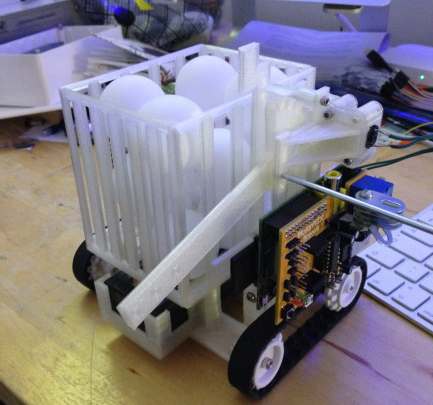 |
Apparently, Will plans to put his robot into service at the office of his employer, 37signals. This is exciting for us at Pololu because 37signals is the originator and a major sponsor of the Ruby on Rails web framework, on which our website is built. And although we did not attend this year’s RubyConf, we are proud that some of our parts, as shown in the video above, made an appearance.
You can find detailed build information in Will’s ping-pong robot blog posts.
New product: Vibration motor
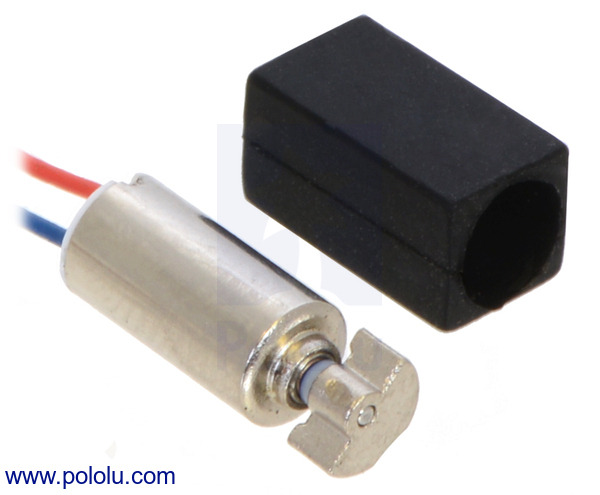 |
Do you want your project to vibrate annoyingly like a cell phone? Then our new vibration motor might be just what you are looking for. The vibration motor is intended for 3 V operation and is small (11.6 × 4.6 × 4.8 mm) and light (0.8 g), which means you do not need a lot of space in your project for it. The vibration motor includes the small rubber sleeve shown in the picture, which allows for easier mounting and slightly dampens any chattering that might occur against the surface it is mounted to.
For more information, see the Vibration motor 11.6 × 4.6 × 4.8 mm product page.
We also carry three shaftless vibration motors:
Personalize your own Christmas ornaments
 |
Using our Custom Laser Cutting Service, you can design and cut your own Christmas ornaments. Whether this is to decorate your own tree (and show off to family and friends visiting), or to give away as gifts — personalized decorations are always a big hit for the holidays! We cut the following Pololu Christmas ornaments out of 1/8″ sapphire blue mirrored acrylic with a raster-engraved image, creating a reflective scene on a translucent background.
|
|
Let’s face it, we’re all a bit too familiar with last-minute Christmas shopping, and it’s not too late to order and have these in-hand by the holiday (though we’re getting close, so expedited service or shipping might be required)! The set of seven ornaments like the ones shown can be cut for our low minimum order charge of $25. Of course, since each person’s design will vary a bit, the exact price and quantity might vary. See our Custom Laser Cutting Guide for more information about how our laser cutting service works, or submit a quote request now to get started!
A Pololu Christmas Story (with LEDs!)
Merry Christmas! We got some new LED strips in a week or so ago that are based on the WS2812B. I was pretty excited to play around with them, so I decided I would decorate Ben’s house and make him film this video with me. (I know. I should have decorated my own house, but I live far from the office… and don’t have a wife.)
We should have the code we used for the LEDs available on our github page in a couple of days.


